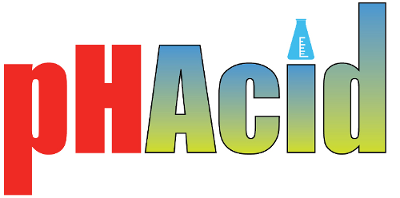The goal when applying any pesticide is to optimize its effects on the targeted pest by applying the proper rate at the proper time with calibrated equipment. The quality of the water carrier can be another important factor that should be considered to optimize pest control. Unfortunately, poor performance of pesticides caused by the negative effects of pH in spray water are often overlooked.
Bing Spray Adjuvant Acidifier
Description
Alkaline Hydrolysis
In the presence of alkaline water (above pH 7.0) many insecticides, fungicides and herbicides are susceptible to a chemical reaction that may degrade or compromise their chemical composition and ultimately reduce their effectiveness. This chemical reaction is called alkaline hydrolysis. Hydrolysis is the splitting of a compound by water in the presence of ions. Water that is alkaline has a larger concentration of hydroxide (OH-) ions than water that is neutral. The higher the pH, the faster the pesticide compound is degraded or rendered inactive. From a practical stand point, it is quite possible to have a significant amount of the active ingredients in your spray tank lost before you even apply the material.
Amending Water
In most cases, labels on pesticides that are susceptible to alkaline hydrolysis will normally show a requirement of a separate acidifying agent (agent) such as BING to lower the pH of alkaline water used in spray tanks to a range of pH 4 to pH 6 (slightly acidic).
BING is a non-corrosive and biodegradable spray adjuvant used to correct alkaline conditions in spray solutions. BING safely replaces and outperforms phosphoric, sulfuric, hydrochloric, “urea-based” and other acid functioning agents.
BING should be used with most pesticides that require a low water pH to slow down hydrolysis or breakdown of products. To minimize loss of chemical effectiveness from hydrolytic breakdown in the tank, it is a good practice to apply material as soon as possible after it is mixed.
Note: There are a few pesticides that should not be acidified under any circumstances due to their phytotoxic nature at low pH. Sprays containing fixed copper fungicides (including Bordeaux mixture, copper oxide, basic copper sulfate, copper hydroxide, etc.) should not be acidified as the acid solution may make the metal soluble and produce a phytotoxic effect when sprayed on plants.
Directions
Mix BING into the spray tank before adding pesticides and/or fertilizers. Determine the desired pH from the Bar Graphs, and then add enough BING to achieve the correct pH color desired.
When the spray tank water turns red, the pH is between 4.5 and 5.5 (SEE indicator bar).
When the spray tank water is golden yellow, the pH is between 6.0 and 6.5 (SEE indicator bar).
When the spray tank water is a pale yellow, the pH is 7.0 (neutral) (SEE indicator bar).
The general rate range for BING is 4-8 oz. per 100 gallons of water (120-240 ml per 400 liters); this range will decrease the pH from 8.5 to 5.0.


